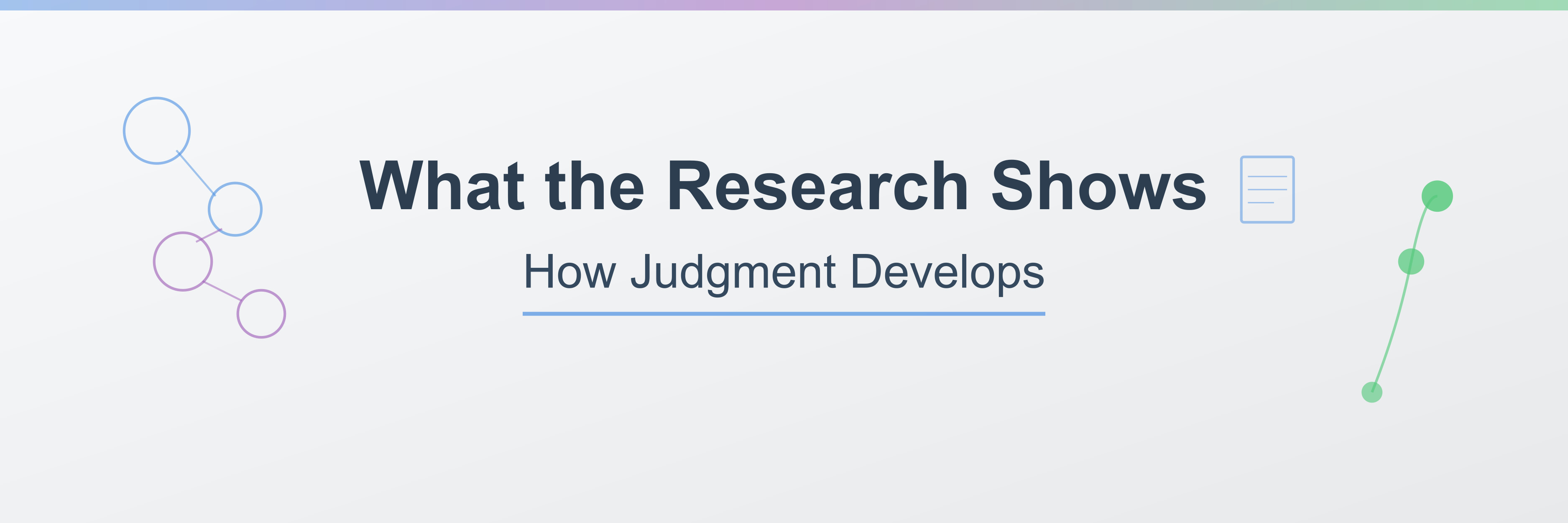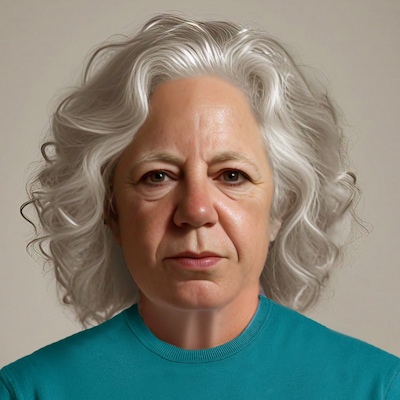What the Research Shows: How Judgment Develops

Published Date
Why This Topic Caught Our Attention
Skills-based learning has taken center stage in corporate development, often supported by AI that identifies skill gaps, maps career paths, and recommends learning content. But one question keeps surfacing: where does judgment fit?
Judgment shapes how people apply skills, connect information, and make trade-offs. It's what turns technical ability into business impact. Four key bodies of research help explain how that capability develops.
1. Experience Builds Pattern Recognition
Gary Klein's Recognition-Primed Decision (RPD) model shows that experts make fast, accurate decisions by recognizing familiar patterns from experience, not by analyzing every possible option. The key is exposure to meaningful variation: real consequences, changing conditions, and immediate feedback that sharpens instinct.
When people see how decisions play out across different contexts, they begin to recognize cues automatically. This is the foundation of sound judgment.
2. Reflection Turns Experience Into Understanding
David Kolb's Experiential Learning Cycle demonstrates that experience alone doesn't create learning. People learn when they reflect, connecting action to outcome, and insight to application.
Without that reflection loop, experience remains activity, not growth. That's why guided debriefs, peer discussions, and visual models of cause and effect can turn short simulations into lasting perspective.
3. Feedback Determines the Quality of Intuition
Daniel Kahneman and Gary Klein (2009) found that intuition becomes reliable only when feedback is valid and repeated. Without visible consequences, people grow confident in bad habits, mistaking familiarity for accuracy.
That insight matters in every learning environment. If outcomes aren't visible or consequences are delayed, intuitive "judgment" may drift further from reality.
4. Professionals Learn by Examining Their Reasoning
Chris Argyris and Donald Schön's work on reflective practice explains how professionals improve not just what they know, but how they think. They learn to question assumptions, test reasoning, and adapt their mental models, turning experience into flexible capability.
That habit of thinking about thinking is what distinguishes expertise from repetition.
What This Means for Business Learning
These studies highlight one pattern: judgment develops through experience, reflection, and feedback, not through content alone.
In a skills-based environment, that's easy to overlook. AI can catalog skills and recommend courses, but it can't replicate the lived process of testing, adjusting, and reasoning in context.
That's where experiential methods still matter, whether through simulation, scenario, or role-relevant decision practice. They give learners a safe way to see cause and effect, apply their skills, and refine their judgment before it matters most.
These findings complement our recent discussion on judgment in a skills-based world, exploring not just what people can do, but how they decide what to do next.
References
- Klein, G. (1998). Sources of Power: How People Make Decisions. MIT Press. https://mitpress.mit.edu/9780262611466/sources-of-power/
- Kolb, D. (1984). Experiential Learning: Experience as the Source of Learning and Development. Prentice Hall. https://carleton-wp-production.s3.amazonaws.com/uploads/sites/313/2022/12/Experiential_Learning_Experience_As_The_Source_Of_-1.pdf
- Kahneman, D., & Klein, G. (2009). Conditions for Intuitive Expertise: A Failure to Disagree. American Psychologist, 64(6), 515–526.
https://pubmed.ncbi.nlm.nih.gov/19739881/ - Argyris, C., & Schön, D. (1978). Organizational Learning: A Theory of Action Perspective. Addison-Wesley. https://books.google.com/books/about/Organizational_Learning.html?id=2aYOAQAAMAAJ
